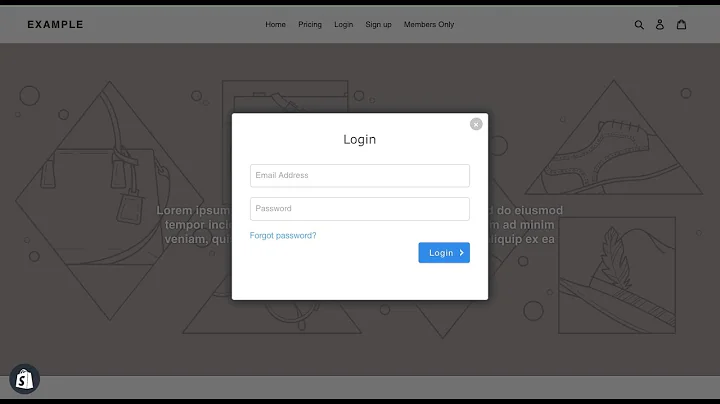The Complete Guide to Dropshipping in Romania 2023
Table of Contents:
- Introduction to dropshipping
- What is Dropshipping?
- Advantages of Dropshipping
3.1 Low Starting Budget
3.2 Easy to Create an Online Store
- Disadvantages of Dropshipping
4.1 Lack of Control over Delivery
4.2 Limited Customization Options
4.3 Longer Delivery Times
4.4 Higher Costs for Customization
4.5 Delayed Payment Processing
4.6 Legal Requirements and Costs
- Necessary Costs for Dropshipping
5.1 Online Store Subscription
5.2 Domain Registration
5.3 Product Testing
5.4 Advertising Costs
5.5 Company Establishment and Accounting
- Making Profit with Dropshipping
- Time and Effort Investment
- Conclusion
Introduction to Dropshipping
Dropshipping is a business model that has gained significant popularity in recent years. More and more people are interested in exploring this model, but not many have a clear understanding of how it works. In this article, we will provide a comprehensive guide to dropshipping, covering everything you need to know before starting your own dropshipping business.
What is Dropshipping?
Dropshipping is a method of selling products where the store does not hold any physical stock. Instead, when a customer places an order on the store's website, the store passes the order on to a distributor who directly ships the product to the customer. The store owner earns a profit by adding their mark-up to the product's price. This model eliminates the need for inventory management and allows entrepreneurs to start a business with minimal upfront costs.
Advantages of Dropshipping
Low Starting Budget
One of the major advantages of dropshipping is that it requires a relatively low starting budget. As a beginner in this business, you can start with as little as $500. This budget can cover essential expenses such as company setup, accounting services, store subscription, product testing, and advertising on platforms like Facebook, Instagram, and TikTok. This low entry barrier makes dropshipping accessible to aspiring entrepreneurs who are still in the testing phase of their business.
Easy to Create an Online Store
Setting up an online store for dropshipping is a straightforward process with platforms like Shopify. In just a couple of hours, you can have a fully functional store ready to receive orders. With various website building tools and templates available, even individuals without technical skills can create an attractive and user-friendly online store. If you want to learn how to create an online store, you can find numerous tutorials and resources online.
Disadvantages of Dropshipping
Lack of Control over Delivery
A significant disadvantage of dropshipping is the lack of control over the delivery process. Typically, the delivery time can range from 9 to 25 days, and it's challenging to predict when and how the products will arrive. As a store owner, it's crucial to track the orders diligently and provide updates to customers regarding their delivery status. This ensures transparency and helps manage customer expectations.
Limited Customization Options
Since dropshipping relies on third-party distributors for product fulfillment, customization options are often limited. You cannot add your logo or personalized messages to the products, as you don't have physical control over the inventory. Customization options usually begin at higher quantities, such as 400 to 500 pieces, which may not be feasible for small-scale businesses. It's essential to set clear expectations with customers regarding product customization options to avoid any misunderstandings.
Longer Delivery Times
Due to the involvement of multiple parties in the supply chain, dropshipping often results in longer delivery times compared to traditional retail models. The products need to be shipped from the distributor to the customer, which can take additional time. It's crucial to communicate expected delivery times clearly on your store and keep customers informed about any potential delays. Providing excellent customer service and addressing any concerns promptly can help mitigate the impact of longer delivery times.
Higher Costs for Customization
If you decide to customize the products in your dropshipping store, be prepared for higher costs. Customization options, such as adding logos or branding, often come with minimum order quantities imposed by suppliers. These quantities can range from hundreds to thousands of pieces, depending on the supplier. Assess the demand for customized products in your niche and evaluate the cost-benefit of customization before incorporating it into your business.
Delayed Payment Processing
In dropshipping, there can be a delay in receiving payments for orders. When a customer places an order, you need to have instant money to pass on the order to the supplier as quickly as possible. This ensures that the supplier can fulfill the order promptly, avoiding a significant increase in delivery time. It's crucial to manage your cash flow effectively and have enough funds readily available to facilitate quick order processing.
Legal Requirements and Costs
Operating a dropshipping business may require adhering to certain legal requirements. It is generally advisable to establish a legal entity for your business and engage an accountant to ensure compliance with tax obligations. Establishing a company and hiring an accountant come with associated costs, typically around $100 for company setup and additional fees for accounting services. These expenses can vary depending on the jurisdiction and the complexity of your business operations.
Necessary Costs for Dropshipping
To successfully run a dropshipping business, it's essential to understand the necessary costs involved. Here are some key expenses to consider:
Online Store Subscription
Most dropshipping businesses operate through an online store, typically hosted on platforms like Shopify. These platforms charge a monthly subscription fee, which can range from $5 to $32 per month, depending on the features and functionalities you require. Some platforms also offer promotional discounts for new users, allowing you to enjoy lower subscription fees for the initial months.
Domain Registration
To create a professional online presence, you will need to register a domain name for your store. The cost of domain registration can range from $5 to $15 per year, depending on the domain registrar. It's advisable to choose a domain registrar that offers competitive pricing and reliable service. Popular domain registrars include Nimi and GoDaddy.
Product Testing
Before launching your dropshipping business, it's important to test different products to identify winning products that have high sales potential. The cost of product testing can vary significantly depending on the products you choose and the advertising strategies you employ. Testing a single product can cost anywhere from $10 to $100 or more. Investing in product testing is essential to determine the profitability and market demand for your chosen products.
Advertising Costs
To drive traffic to your online store and generate sales, you will need to invest in advertising. Facebook and Google Ads are popular platforms for dropshipping businesses. The cost of advertising can vary widely based on several factors, including your target audience, product niche, and advertising budget. It's important to track the performance of your ads and optimize them based on the results to maximize your return on investment.
Company Establishment and Accounting
While not mandatory, establishing a legal company is often advisable for dropshipping businesses. It provides you with additional legal protection and allows you to fulfill the necessary tax obligations in your jurisdiction. The cost of establishing a company can vary depending on the country but usually ranges from $100 to $150. Hiring an accountant to handle your monthly accounting requirements can cost anywhere from $30 to $100, depending on the complexity of your business operations.
Making Profit with Dropshipping
Dropshipping can be a profitable business venture if executed effectively. Let's consider a hypothetical scenario where you want to import a t-shirt from AliExpress, which costs $5 with free shipping. To make a profit, you can list the t-shirt on your store for $20, subtracting the cost of the purchased product. Assuming an advertising cost of $5 and a VAT of $2 (if applicable), you would end up with an $8 profit per t-shirt sold. With an average of 5 orders per day, you could potentially make a monthly profit of $1200. However, it's important to consider other costs such as accounting fees, which can impact your overall profitability.
Time and Effort Investment
Building a successful dropshipping business requires time, effort, and a continuous learning mindset. It's essential to dedicate sufficient time to research your niche, understand market trends, and identify winning products. Regularly updating your store, optimizing your marketing campaigns, and providing excellent customer service are crucial for sustainable growth. Results may not come overnight, but with perseverance and continuous improvement, you have the potential to achieve significant profits in the long run.
Conclusion
Dropshipping offers an appealing business model for aspiring entrepreneurs with a limited budget and interest in e-commerce. It provides the flexibility to start a business without the need for physical inventory. However, it's important to consider the advantages and disadvantages carefully before diving into this venture. Dropshipping has its challenges, including longer delivery times, limited customization options, and associated costs. Success in dropshipping requires careful planning, effective marketing strategies, and a strong focus on customer satisfaction. With dedication and persistence, it is possible to build a profitable dropshipping business and achieve financial success.



















